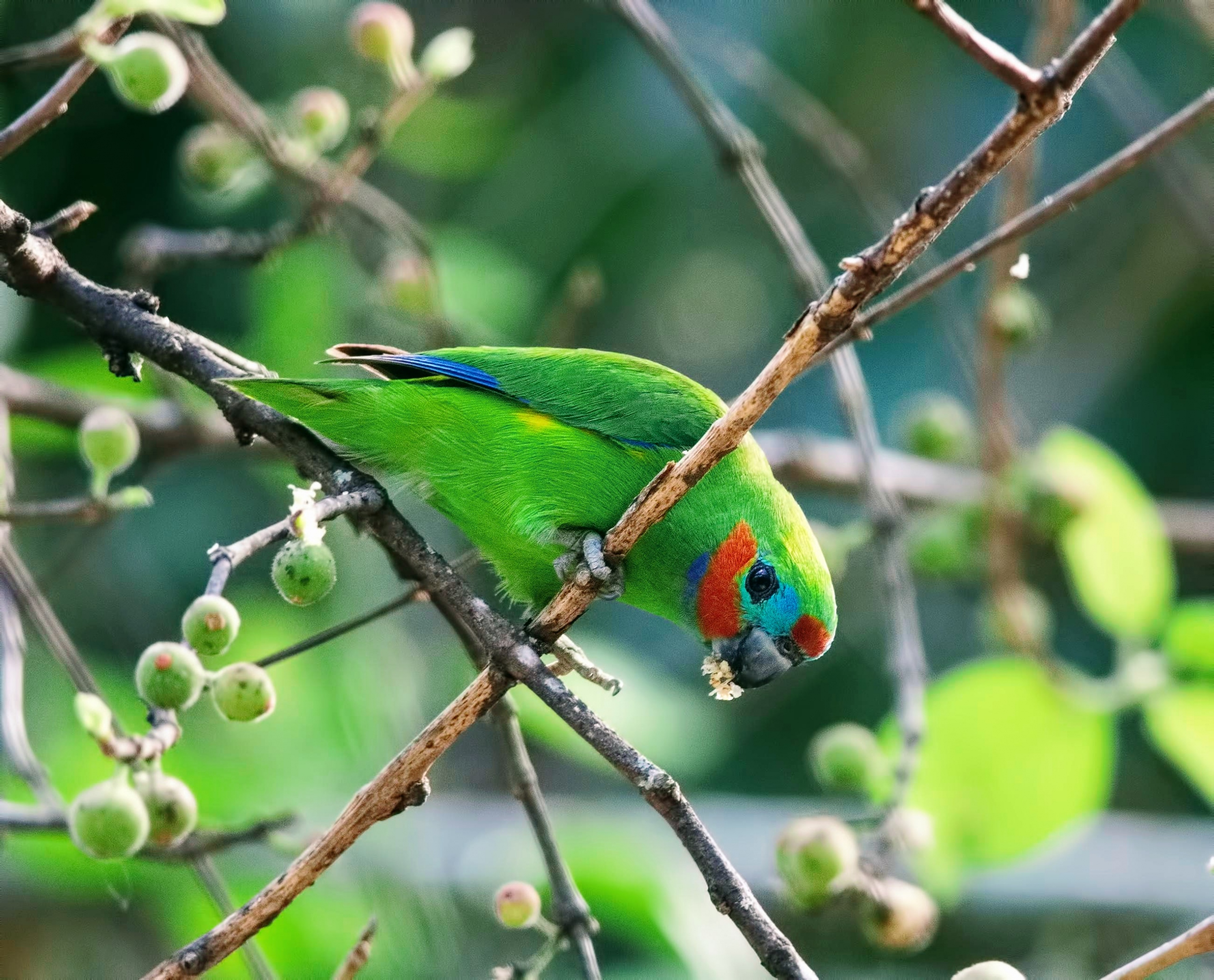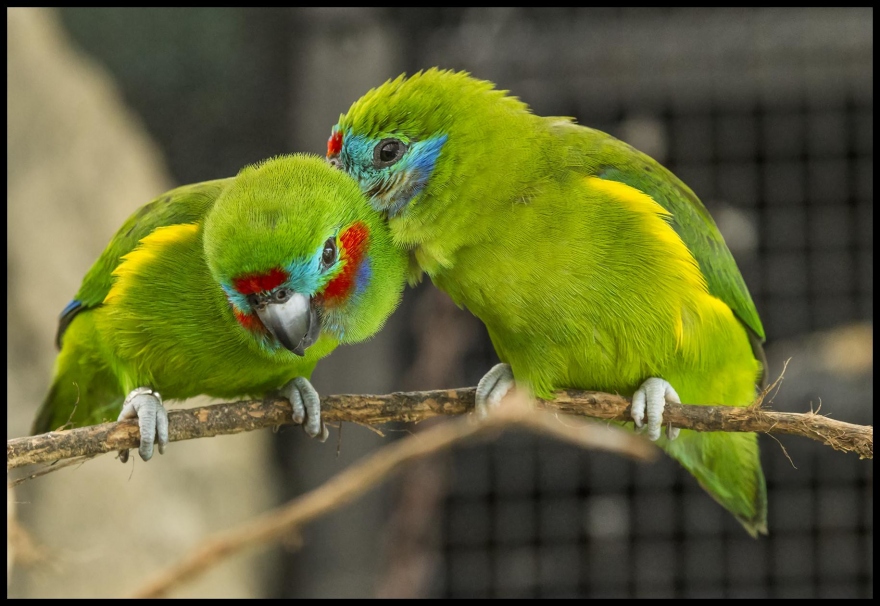The double-eyed fig parrot is a parrot species found in New Guinea and tropical far-north Queensland. They are widely considered to be the smallest parrot species in Australia. There are eight double-eyed fig parrot subspecies, several of which are endangered in the wild. The red-browed fig parrot and possible the Coxen’s fig parrot are the subspecies held in private aviculture in very small numbers.

Housing & Compatibility
Wild double-eyed fig parrots are found in tropical rainforests in Australia and South-East Asia, where conditions are hot and humid throughout the year. Australia’s cooler southern states—especially in winter—are unsuitable for keeping fig parrots, except where significant effort has been put into aviary design, protection, insulation, and perhaps even artificial climate control.
As active birds, they need a large-sized aviary to ensure they get sufficient exercise. Despite liking a lot of space, they don’t like having a lot of open space, preferring the safety and security of a dense forest canopy that emulates their natural habitat. Tropical plants—especially fruiting plants—that they’re likely to encounter in far-north Queensland are ideal.
Diet & Feeding
Wild double-eyed fig parrots forage for figs, berries, seeds, nectar, and grubs in the forest canopy. In captivity, a similarly varied diet of fresh fruits, vegetables, and insects should be provided.
A supply of small native Australian figs is the best food source a breeder can provide. Growing these plants in Queensland is relatively easy, but the cooler southern states may require a greenhouse. Excess produce can be frozen to use as emergency food when fresh figs can’t be acquired.
It’s the seeds of the fig that double-eyed fig parrots most relish, so slightly dried figs are still acceptable. A quality mix of commercial small parrot seed can also be offered as a secondary food source.
Many of the double-eyed fig parrot’s favourite foods tend to spoil very quickly in warm weather. If their food is allowed to rot, it could expose the birds to fungal and bacterial infections. Furthermore, spoiled fruit will attract insects and other pests that could be carriers of any number of diseases. Multiple feedings throughout the day and good attention to hygiene is needed to successfully keep this species.
In addition to seeds, a steady supply of fresh seasonal fruits (such as apple and grapes), green seeding grasses, commercial parrot soft foods, leafy greens, and small insects such as mealworms should be offered.

Breeding Double-Eyed Fig Parrots
Wild double-eyed fig parrots bore a hole in a partially rotted tree branch to create a nesting hollow. A rotted log can be provided to emulate this in captivity. Some breeders also report success using a budgie-sized nesting box filled with a single block of soft cork.
Double-eyed fig parrot pairs will produce 2-3 clutches of young each year, breeding from spring through to early summer. Each clutch typically consists of two eggs, which are incubated exclusively by the hen for 18-20 days. Young birds fledge the nest after approximately six weeks and become independent a few months later.
Sexing
Can be visually sexed at maturity, as only males have red feathers under their eyes.
Mutations
There are no known double-eyed fig parrot mutations.
Health & Lifespan
A strict parasite and worm control regiment is essential to the long term wellbeing of any bird colletion. The double-eyed fig parrot’s lifespan is not definitively known, but thought to be somewhere between 10 and 15 years.